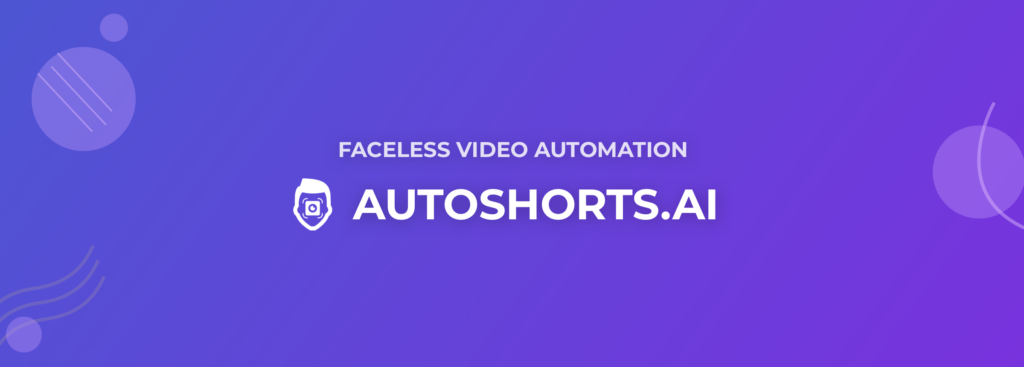
As we dive deeper into 2024, the landscape of artificial intelligence (AI) continues to evolve at a breathtaking pace. From creative content generation to enhanced cybersecurity measures, AI is revolutionizing industries and reshaping our daily lives. In this comprehensive blog post, we’ll explore five pivotal AI trends that are set to define the technological landscape this year and beyond.
1. Generative AI and the Democratization of Creation
The Rise of AI-Powered Content Creation
Generative AI has emerged as a game-changer in the world of content creation. Tools like ChatGPT have catapulted AI into the public consciousness, enabling individuals and businesses alike to harness the power of machine learning for creative endeavors. This democratization of AI technology is breaking down barriers, allowing even those without technical expertise to integrate AI into their workflows.







How Generative AI Works
At its core, generative AI utilizes complex machine learning algorithms to analyze vast amounts of training data and generate new content based on learned patterns. Whether it’s crafting compelling web copy, drafting emails, spinning imaginative stories, or even writing functional code, these AI generators are pushing the boundaries of what’s possible in automated content creation.
The Impact on Industries
The implications of this technology are far-reaching:
- Marketing and Advertising: Generative AI is streamlining content creation processes, enabling marketers to produce personalized campaigns at scale.
- Software Development: AI-assisted coding is accelerating development cycles and making programming more accessible to non-experts.
- Media and Entertainment: From script writing to music composition, AI is becoming an invaluable tool in the creative industries.
Ethical Considerations and Challenges
While the potential of generative AI is immense, it also raises important ethical questions:
- Accuracy and Authenticity: How can we ensure the reliability of AI-generated content and distinguish it from human-created work?
- Job Displacement: As AI becomes more proficient in creative tasks, how will this impact human roles in these fields?
- Misuse and Deepfakes: The technology’s ability to create convincing fake content poses risks to information integrity and public trust.
As we continue to integrate generative AI into various sectors, addressing these concerns will be crucial for responsible adoption and development.
2. Multimodal AI: Bridging the Gap Between Human and Machine Interaction
The Power of Multi-Sensory AI
Multimodal AI represents a significant leap forward in creating more natural and intuitive human-machine interactions. By processing and integrating multiple types of data inputs – such as text, images, and audio – these systems are approaching human-like sensory and cognitive capabilities.
Applications and Potential
The implications of multimodal AI are vast and exciting:
- Enhanced Customer Service: AI-powered chatbots and virtual assistants that can understand context from various input types, providing more accurate and helpful responses.
- Advanced Search Capabilities: Search engines that can process queries across different media types, offering more comprehensive and relevant results.
- Improved Accessibility: Technology that can translate between different modes of communication, making digital experiences more inclusive for people with disabilities.
- Creative Tools: Software that can generate or manipulate content across multiple media types simultaneously, opening new avenues for artistic expression.
Challenges in Implementation
While the potential of multimodal AI is enormous, several challenges need to be addressed:
- Data Integration: Combining and processing diverse data types requires sophisticated algorithms and substantial computational power.
- Privacy Concerns: As these systems process more types of personal data, ensuring user privacy becomes increasingly complex.
- Interpretability: Understanding how multimodal AI systems arrive at their conclusions can be more challenging than with single-mode systems.
As multimodal AI continues to evolve, we can expect to see increasingly sophisticated and intuitive AI-powered interfaces that blur the lines between human and machine interaction.
3. AI-Driven Cybersecurity: The New Frontier in Digital Defense
The Growing Importance of AI in Cybersecurity
As cyber threats become more sophisticated, traditional security measures are struggling to keep pace. AI-powered cybersecurity solutions are emerging as a critical tool in predicting, detecting, and responding to threats with unprecedented speed and efficiency.
Market Growth and Potential
The AI cybersecurity market is on a trajectory for explosive growth:
- Current market size (2023): Approximately $24 billion
- Projected market size (2030): Around $134 billion
This substantial growth reflects the increasing recognition of AI’s crucial role in protecting digital assets and infrastructure.
AutoShorts.ai
AutoShorts.ai automatically creates, schedules, and posts Faceless videos for you, on auto-pilot. Each video is unique and customised to your topic. click the link below to try it today for free https://autoshorts.ai/?ref=veterancream



Key Advantages of AI in Cybersecurity
- Real-time Threat Detection: AI systems can analyze vast amounts of data to identify potential threats as they emerge.
- Automated Response: AI can initiate countermeasures against detected threats instantly, minimizing damage.
- Predictive Analysis: By learning from past incidents, AI can anticipate future attack patterns and vulnerabilities.
- Anomaly Detection: AI excels at identifying unusual patterns that might indicate a security breach.
Challenges and Considerations
While AI offers significant advantages in cybersecurity, it also introduces new challenges:
- AI Vulnerabilities: Attackers may attempt to exploit weaknesses in AI systems themselves.
- False Positives: Overly sensitive AI systems might flag legitimate activities as threats.
- Privacy Concerns: The extensive data analysis required for AI-driven security could potentially infringe on user privacy.
- Skill Gap: There’s a growing need for cybersecurity professionals who understand both traditional security principles and AI technologies.
As AI continues to evolve, we can expect to see more robust, intelligent, and proactive cybersecurity solutions that can keep pace with the ever-changing threat landscape.
4. Embedded AI and UX-Focused AI: Bringing Intelligence Closer to Users
The Rise of Embedded AI
Embedded AI refers to the integration of AI capabilities directly into user interfaces and operational processes. This trend is gaining momentum as businesses seek to enhance efficiency and user experience by bringing AI closer to the point of interaction.
Market Growth and Applications
The embedded AI market is projected to grow by 5.4% annually, driven by businesses looking to incorporate fine-tuned AI models into their systems. This growth is enabling:
- Smart Devices: Household appliances and personal gadgets with built-in AI for improved functionality.
- Industrial IoT: AI-embedded sensors and devices for real-time decision-making in manufacturing and logistics.
- Automotive Systems: Advanced driver assistance systems (ADAS) and autonomous driving features.
- Healthcare Devices: Medical equipment with embedded AI for faster diagnostics and personalized treatment plans.
Advantages of Embedded AI
- Reduced Latency: By processing data locally, embedded AI can provide faster responses.
- Enhanced Privacy: Local processing can reduce the need to send sensitive data to cloud servers.
- Offline Functionality: AI-powered features can work without constant internet connectivity.
- Personalization: Devices can learn and adapt to user preferences over time.
Challenges in Implementation
- Hardware Limitations: Embedding complex AI models into devices with limited processing power and memory.
- Update Management: Ensuring embedded AI systems stay current with the latest improvements and security patches.
- Cost Considerations: The initial investment for developing and deploying embedded AI can be substantial.
UX-Focused AI: Enhancing User Experiences
Alongside embedded AI, there’s a growing focus on improving the user experience of AI-powered tools:
- Multilingual Capabilities: AI companies are working to make natural language processing accessible across diverse languages, broadening the global reach of AI tools.
- Intuitive Interfaces: Developing AI systems that can understand and respond to more natural, conversational inputs.
- Adaptive Learning: AI systems that can learn from user interactions to provide increasingly personalized experiences over time.
As embedded AI and UX-focused AI continue to evolve, we can expect to see more seamless, intuitive, and personalized AI-powered experiences across a wide range of devices and applications.
5. AI Democratization and Accessibility: Empowering Innovation at All Levels
Breaking Down Barriers to AI Adoption
The democratization of AI is a transformative trend that’s making powerful AI tools accessible to a broader range of users, from startups to mid-sized companies and even individual developers.
Drivers of AI Democratization
Several factors are contributing to this trend:
- User-Friendly AI Platforms: The development of intuitive interfaces that abstract away the complexities of AI implementation.
- Cloud-Based Services: Scalable AI services that don’t require significant infrastructure investments.
- Open-Source Frameworks: Freely available AI tools and libraries that accelerate development and innovation.
- Pre-trained Models: Access to models that can be fine-tuned for specific applications without starting from scratch.
Impact on Innovation and Business
The increased accessibility of AI is having far-reaching effects:
- Accelerated Digital Transformation: Businesses of all sizes can leverage AI to improve operations and customer experiences.
- Diverse Problem-Solving: A broader base of users means AI is being applied to a wider range of challenges across various industries.
- Increased Competitiveness: Smaller companies can now compete with larger corporations by leveraging advanced AI capabilities.
- Fostering Inclusivity: More diverse groups of people can contribute to and benefit from AI technology.
Challenges and Considerations
While the democratization of AI offers numerous benefits, it also presents some challenges:
- Quality Control: Ensuring that widely accessible AI tools maintain high standards of performance and reliability.
- Ethical Use: Promoting responsible AI practices among a broader user base.
- Oversimplification: Balancing ease of use with the need for understanding AI’s complexities and limitations.
- Data Privacy: Ensuring that democratized AI tools handle sensitive data appropriately.
The Path Forward
To fully realize the benefits of AI democratization, several steps are crucial:
- Education and Training: Providing resources to help users understand AI capabilities and limitations.
- Ethical Guidelines: Developing and promoting standards for responsible AI use.
- Collaborative Ecosystems: Fostering communities where users can share knowledge and best practices.
- Continuous Innovation: Encouraging ongoing development of more accessible and powerful AI tools.
As AI becomes more accessible, we can expect to see a surge in innovation across various sectors, with AI-driven solutions addressing an increasingly diverse range of global challenges.
Conclusion: Embracing the AI-Powered Future
As we navigate through 2024, these five AI trends – generative AI, multimodal AI, AI-driven cybersecurity, embedded and UX-focused AI, and AI democratization – are shaping a future where artificial intelligence is more powerful, more accessible, and more integrated into our daily lives than ever before.
While these advancements bring exciting possibilities, they also come with responsibilities. As we continue to push the boundaries of what’s possible with AI, it’s crucial that we remain mindful of the ethical implications and potential challenges. By fostering a culture of responsible innovation and inclusive development, we can harness the full potential of AI to create a more efficient, creative, and secure digital world.
The AI revolution is not just about technology – it’s about empowering people, transforming industries, and reimagining what’s possible. As these trends continue to evolve, they will undoubtedly shape the technological landscape for years to come, opening up new opportunities for innovation and growth across all sectors of society.







